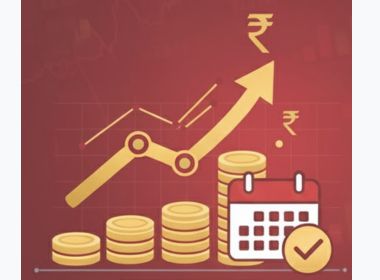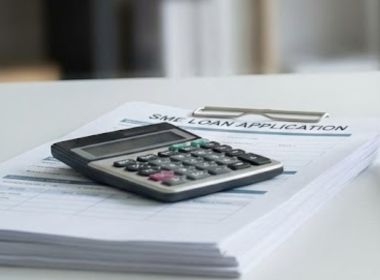Search Suggestions
- Gold Loan
- Money Transfer
- Mutual Funds

What is a Post-Dated Cheque? Meaning, Validity & Loan Uses
Did you know you can now schedule automatic payments for later dates? Technology may have made this feature accessible to people nationwide now, but deferring payments is not a new concept. The feature has been around for decades in the form of a post-dated cheque (PDC), a financial tool that originally made deferred payments possible.
Table of Content
- What is a Post-Dated Cheque (PDC)?
- Why Are Post-Dated Cheques Issued?
- How to Write a Post-Dated Cheque?
- Validity of a Post-Dated Cheque
- Legal Consequences of Dishonouring a Post-Dated Cheque
- Alternatives to a Post-dated Cheque
In India, post-dated cheques are widely used for purposes such as rent payments, EMIs, and business transactions. So, if you are someone new to this or just want to understand it better, here is a short guide that will walk you through the meaning of PDC, how it works, its validity, and much more
What is a Post-Dated Cheque (PDC)?
PDC’s full form is post-dated cheques; it’s a regular cheque with a future date written on it. This means the person receiving this cheque cannot cash or deposit it until the date mentioned on the cheque.
To help you better understand how this works, here is an example of a post-dated cheque:
Suppose today is 3rd June, but you write a cheque dated 15th June. That cheque becomes a post-dated cheque, and the bank won’t process it until the 15th.
Why Are Post-Dated Cheques Issued?
Now that you know how a PDC works, here are some reasons why they are issued:
- Rent Payment: Many landlords often ask tenants to submit post-dated cheques for future payments.
- Loan Repayment: When you take a loan, such as a personal loan, the lender asks for a series of post-dated cheques as a form of repayment security. Unlike loans that require collateral, a loan against PDC cheques is typically unsecured, and the cheques serve as a commitment to repay the loan.
- Avoid Late Fee: By issuing a PDC in situations where you don’t have enough funds, you can avoid late fees and ensure your commitment to pay is intact.
- Business Transactions: Business owners often use post-dated cheques for transactions to maintain good relationships with suppliers and customers and ensure continuity in operations.
Suggested Read: Step-by-Step Procedure for Applying for a Small Personal Loan Online
How to Write a Post-Dated Cheque?
Writing a post-dated cheque is exactly the same as how you write a regular cheque. The only difference is that you fill in a future date and not the current date. Here are some key steps to ensure you write the cheque correctly:
- Write a Date: Ensure that the date on the cheque is in future.
- Write the Amount: Just as you would in a regular cheque, write the amount, both in figures and words.
- Payee’s name: Write the name of the person or entity you are paying.
- Signature: Sign that cheque like you would in a regular cheque.
Validity of a Post-Dated Cheque
The validity of a post-dated cheque is three months from the date written on it. For instance, if a post-dated cheque is issued or payable on 20 May, it will be valid till 19 August. After that, it will become invalid, and the bank will not process it.
Legal Consequences of Dishonouring a Post-Dated Cheque
If you issue a Post-Dated Cheque and it bounces due to insufficient balance, then you could get into serious trouble. As per the Negotiable Instruments Act, 1881, in India, dishonouring a post-dated cheque is a serious offence.
The payee (person who received the cheque) can: -
- Issue a legal notice to you within 30 days of the cheque bounce.
- Initiate a legal case if you fail to make the payment within 15 days of receiving the notice.
Upon conviction, the defaulter may have to attend court visits, pay fines, or even serve jail time in extreme cases. So, while issuing a Post-Dated Cheque, always ensure you have the funds in your account by the due date.
Alternatives to a Post-dated Cheque
While post-dated cheques are widely used and offer many benefits, they also have some drawbacks. They are prone to wear and tear and can get misplaced. Also, writing mutilated cheques for multiple payments can be a little time-consuming.
Here are some alternatives to post-dated cheques:
- Standing Instructions (SI): Standing Instructions allow you to automate regular payments directly from your bank account. This method is ideal for fixed, recurring payments such as EMIs, utility bills, or insurance premiums.
- Electronic Fund Transfer (EFT): Electronic fund transfers via netbanking, like NEFT, IMPS or RTGS, are becoming a more popular method for transferring funds.
As we conclude, it is clear that post-dated cheques are a reliable tool for deferred payments, especially in loans, rentals, and business transactions. However, it’s essential to understand their legal implications, especially in the case of dishonour, and consider safer, more efficient alternatives where possible.
Looking for a hassle-free loan experience? Choose Muthoot Finance, India’s trusted financial partner. Whether it’s a personal loan or a gold loan, we offer simple documentation, quick disbursal, and flexible repayment options. Visit your nearest Muthoot Finance branch or apply online today!
- Instant Personal Loan
- EMI Calculator
- Document Required
- Track Personal Loan
- Interest Rate
- Procedure and Eligibility
CATEGORIES
OUR SERVICES
-

Credit Score
-

Gold Loan
-

Personal Loan
-

Cibil Score
-

Vehicle Loan
-

Small Business Loan
-

Money Transfer
-

Insurance
-

Mutual Funds
-

SME Loan
-

Corporate Loan
-

NCD
-

PAN Card
-

NPS
-

Custom Offers
-

Digital & Cashless
-

Milligram Rewards
-

Bank Mapping
-

Housing Finance
-

#Big Business Loan
-

#Gold Loan Mela
-

#Kholiye Khushiyon Ki Tijori
-

#Gold Loan At Home
-

#Sunherisoch
RECENT POSTS

Understanding KDM Gold and Why it’s Banned
Know More
How BNPL Affects Your Credit Score
Know More
What is a Cheque and its Different Types in India?
Know More
Benefits of Paying Your EMIs on Time: Why Timely Payments Matter
Know More
A Complete Guide to Report Online Fraud
Know More
How does a Personal Loan Affect your Credit Score?
Know More
Gilt Fund vs Liquid Fund: Full Form, Meaning & SIP Guide
Know More
XIRR in Mutual Funds & SIP: Full Form, Meaning, Formula and How to Calculate
Know More
7 Key Factors to Consider Before Taking an SME Loan
Know More
Difference Between Black Gold and Gold: Everything You Need to Know
Know MoreFIN SHORTS

What Are Co-Pay and Deductibles in Insurance Policies?
Know More
Should You Take a Loan Against Your Mutual Fund or SIP?
Know More
Top 5 Best Mid-Cap Mutual Funds to Watch in 2026
Know More
Are Personal Loans Right for Retirees? Key Points to Consider
Know More
What Happens to a Personal Loan After the Borrower Dies?
Know More
Best Loan Choices for Credit Scores of 580 and Below
Know More
7 Reasons Why a Gold Loan Is the Best Option for Small Businesses
Know More
10 Reasons Why People in India Prefer Physical Gold
Know More
Real Estate vs Gold: Which Is a Better Investment in India?
Know More
10 Common Mistakes That Make Investors Lose Money in Mutual Funds
Know More
10 Reasons Why Gold Has So Much Appeal in Uncertain Times
Know More
7 Ways Settling Debt Can Impact Your CIBIL Score
Know More- South +91 99469 01212
- North 1800 313 1212


